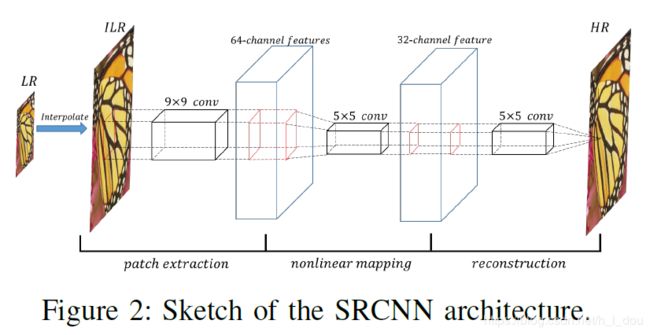- [论文阅读]Distilling Step-by-Step! Outperforming Larger Language Models with Less Training Data and Smal
0x211
论文阅读语言模型人工智能自然语言处理
中文译名:逐步蒸馏!以较少的训练数据和较小的模型规模超越较大的语言模型发布链接:http://arxiv.org/abs/2305.02301AcceptedtoFindingsofACL2023阅读原因:近期任务需要用到蒸馏操作,了解相关知识核心思想:改变视角。原来的视角:把LLMs视为噪声标签的来源。现在的视角:把LLMs视为能够推理的代理。方法好在哪?需要的数据量少,得到的结果好。文章的方法
- 【论文阅读】【IEEE TCYB 2023】Edge-Guided Recurrent Positioning Network forSalient Object Detection in Opt
引言任务:光学遥感图像中显著目标检测论文地址:Edge-GuidedRecurrentPositioningNetworkforSalientObjectDetectioninOpticalRemoteSensingImages|IEEEJournals&Magazine|IEEEXplore代码地址:前置知识一、摘要目前由于光学rsi中目标类型多样、目标尺度多样、目标方向众多以及背景杂乱,现有S
- 大模型服务的推理优化探索
半吊子全栈工匠
【引】有的事情别人不问时我们明白,一旦要我们解释它我们就不明白了,而这正是我们必须留心思索的东西。于是,开启了一次又一次的论文阅读之旅。开发并部署大模型应用肯定要考虑它们的服务成本。然而,钱并不是唯一的考虑因素,如果不能解决模型性能方面的问题,即使有很大的预算,大模型服务仍会受到影响。本文尝试讨论将LLM推理服务更改为高吞吐量引擎的挑战与应对方法。1.大模型服务面临的挑战大模型的能力令人惊叹,但其
- ER综述论文阅读-Emotion recognition in EEG signals using deep learning methods: A review
今天早睡了
情绪识别EmotionRecognition论文阅读深度学习人工智能
EmotionrecognitioninEEGsignalsusingdeeplearningmethods:AreviewQ1期刊,2023论文链接:https://d1wqtxts1xzle7.cloudfront.net/105887899/emotionreview-libre.pdf?1695460941=&response-content-disposition=inline%3B+f
- 【论文阅读】AdaCtrl: Towards Adaptive and Controllable Reasoning via Difficulty-Aware Budgeting
quintus0505
LLM论文阅读语言模型
AdaCtrl:TowardsAdaptiveandControllableReasoningviaDifficulty-AwareBudgeting3Method3.1长度触发标签作为控制接口(Length-TriggerTagsasControllingInterface)3.2冷启动微调(Cold-startfine-tuning)3.3难度感知的强化学习框架(Difficulty-awar
- 【论文阅读笔记】TimesURL: Self-supervised Contrastive Learning for Universal Time Series
少写代码少看论文多多睡觉
#论文阅读笔记论文阅读笔记
TimesURL:Self-supervisedContrastiveLearningforUniversalTimeSeriesRepresentationLearning摘要 学习适用于多种下游任务的通用时间序列表示,并指出这在实际应用中具有挑战性但也是有价值的。最近,研究人员尝试借鉴自监督对比学习(SSCL)在计算机视觉(CV)和自然语言处理(NLP)中的成功经验,以解决时间序列表示的问题。
- 【论文阅读】Decoupled Knowledge Distillation
Bosenya12
论文阅读
摘要:最先进的蒸馏方法主要基于从中间层蒸馏出深层特征,而logit蒸馏的重要性则被大大忽视了。为了提供研究logit蒸馏的新观点,我们将经典的KD损失重新表述为两部分,即目标类知识蒸馏(TCKD)和非目标类知识蒸馏(NCKD)。我们实证调查并证明了两部分的效果:TCKD传递了有关训练样本“困难”的知识,而NCKD是logit蒸馏起作用的突出原因。更重要的是,我们揭示了经典的KD损失是一个耦合公式,
- 【论文阅读】Transfer Learning for Automatic Modulation Recognition Using a Few Modulated Signal Samples
摘要:这封信提出了一种用于自动调制识别(AMR)的迁移学习模型,该模型仅具有少量调制信号样本。传输模型以音频信号UrbanSound8K作为源域进行训练,然后以一些调制信号样本为目标域进行微调。为了提高分类性能,信噪比(SNR)被用作一个功能来促进信号的分类。仿真结果表明,迁移模型在分类精度方面具有显著优势。这篇文章的核心内容是提出了一种基于迁移学习(TransferLearning)的自动调制识
- 【论文阅读】Meta-SE: A Meta-Learning Framework for Few-Shot Speech Enhancement
Bosenya12
论文阅读
这篇文章介绍了一个名为Meta-SE的元学习框架,专门用于少样本(few-shot)语音增强问题。文章的核心目标是解决在实际应用中,由于训练样本有限而导致传统深度神经网络(DNN)模型性能受限的问题。Meta-SE通过元学习的方法,利用先验的元知识快速适应新的任务和噪声类型,即使只有少量训练样本也能表现出色。背景知识与研究动机语音增强技术旨在从带噪语音信号中恢复目标语音,提升语音质量和可懂度。深度
- 【论文阅读】SASLN:小样本条件下机械故障诊断的信号增强自学习网络
SASLN:SignalsAugmentedSelf-TaughtLearningNetworksforMechanicalFaultDiagnosisUnderSmallSampleCondition本文介绍了一种名为SASLN(SignalsAugmentedSelf-TaughtLearningNetworks)的方法,专门用于在小样本条件下对风力发电机(WT)的发电机轴承故障进行诊断。该方
- 【论文阅读】SSCL-AMC: 一种基于动态增强和集成学习的自监督自动调制分类方法
SSCL-AMC:ASelf-supervisedAutomaticModulationClassificationMethodviaDynamicAugmentationandEnsembleLearning摘要:与传统的手工自动调制分类(AMC)方法相比,深度学习已经显示出有希望的结果,AMC作为信号检测和调制之间的中间步骤发挥着关键作用。然而,获取大规模标记数据仍然具有挑战性,因为数据质量和
- [论文阅读] 人工智能 + 软件工程 | 当 LLM 写代码时,它的 “思考过程” 靠谱吗?—— 揭秘 CoT 质量的那些事儿
张较瘦_
前沿技术论文阅读人工智能软件工程
当LLM写代码时,它的“思考过程”靠谱吗?——揭秘CoT质量的那些事儿论文标题:AreTheyAllGood?EvaluatingtheQualityofCoTsinLLM-basedCodeGenerationarXiv:2507.06980[pdf,html,other]AreTheyAllGood?EvaluatingtheQualityofCoTsinLLM-basedCodeGenera
- [论文阅读] 人工智能 + 软件工程 | 需求获取访谈中LLM生成跟进问题研究:来龙去脉与创新突破
需求获取访谈中LLM生成跟进问题研究:来龙去脉与创新突破论文标题:RequirementsElicitationFollow-UpQuestionGenerationarXiv:2507.02858RequirementsElicitationFollow-UpQuestionGenerationYuchenShen,AnmolSinghal,TravisBreauxComments:13page
- Prompt相关论文阅读(02)--Auto-CoT(2024-11-25)
zhilanguifang
论文promptengineering论文阅读笔记
论文阅读笔记2024-11-24~2024-11-25Auto-CoT:AutomaticChainofThoughtPromptinginLargeLanguageModels(ICLR2023)碎碎念:复现代码和笔记保存到gitee仓库上海交通大学的学生在亚马逊实习的时候的成果ICLR2023摘要:LLM能够通过生成中间推理步骤执行复杂的推理。提供这些步骤用于提示演示叫做思维链提示CoT。Co
- 【论文阅读】Dynamic Few-Shot Visual Learning without Forgetting
Bosenya12
论文阅读
系统概述如下:(a)一个基于卷积神经网络(ConvNet)的识别模型,该模型包含特征提取器和分类器;(b)一个少样本分类权重生成器。这两个组件都是在一组基础类别上训练的,我们为这些类别准备了大量训练数据。在测试阶段,权重生成器会接收少量新类别的训练数据以及基础类别的分类权重向量(分类器框内的绿色矩形),并为新类别生成相应的分类权重向量(分类器框内的蓝色矩形)。这样,卷积神经网络就能同时识别基础类别
- 【论文阅读】Few-Shot PPG Signal Generation via Guided Diffusion Models
Bosenya12
论文阅读
从少量样本数据选择到后处理的整体框架。首先,扩散模型在N样本数据集和指导下的训练。接着,模型生成一个增强的数据集,并进一步优化以提高保真度。最后,这些合成数据与少量样本训练数据集结合,用于基准模型的训练和评估。数据分布从最初的红色变为保真度增强的蓝色,这表明模型与真实数据更加吻合,如简化后的数据分布示意图所示。这篇文章的核心内容是介绍了一种名为BG-Diff(Bi-GuidedDiffusion)
- [论文阅读] 人工智能 | 读懂Meta-Fair:让LLM摆脱偏见的自动化测试新方法
张较瘦_
前沿技术论文阅读人工智能
读懂Meta-Fair:让LLM摆脱偏见的自动化测试新方法论文标题:Meta-Fair:AI-AssistedFairnessTestingofLargeLanguageModelsarXiv:2507.02533Meta-Fair:AI-AssistedFairnessTestingofLargeLanguageModelsMiguelRomero-Arjona,JoséA.Parejo,Jua
- 【LLM论文阅读】
一只齐刘海的猫
论文阅读
LLM论文阅读论文重点论文链接RopeRoFormer:EnhancedTransformerwithRotaryPositionEmbeddingRoPE论文阅读YarnUnderstandingYaRN:ExtendingContextWindowofLLMs论文YaRN笔记T5ExploringtheLimitsofTransferLearningwithaUnifiedText-to-Te
- Segment Anything in High Quality之SAM-HQ论文阅读
qq_41627642
深度学习论文阅读论文阅读
摘要最近的SegmentAnythingModel(SAM)在扩展分割模型规模方面取得了重大突破,具备强大的零样本能力和灵活的提示机制。尽管SAM在训练时使用了11亿个掩码,其掩码预测质量在许多情况下仍不理想,尤其是对于结构复杂的目标。我们提出了HQ-SAM,使SAM能够精确地分割任意目标,同时保留其原有的可提示设计、高效性和零样本泛化能力。我们的设计充分复用并保留了SAM预训练的模型权重,仅引入
- yolov算法详解_yolo 目标检测算法个人总结(yolov1)
CHAO JIANG
yolov算法详解
yolo目标检测算法个人总结目前yolo目标检测有两个版本,分别为v1和v2。因工作需要用yolo算法检测人物,所以这段时间重点看了这两篇论文,并实现了对应的tensorflow代码。这里记录下在论文阅读过程中的一些细节信息,留给自己,同时也希望各位能指出本人理解错误的地方,谢谢!一:yolov1关于yolov1算法的详解在网上已经非常多了,在这里我大概叙述下算法的流程,以及在开发过程中遇到的一些
- 《论文阅读》GPT-3是否会产生移情对话?一种新的情境示例选择方法和用于生成同理心对话的自动评估度量 ICCL 2022
365JHWZGo
情感对话论文阅读gpt-3共情回复上下文学习提示学习大模型
《论文阅读》GPT-3是否会产生移情对话?一种新的情境示例选择方法和用于生成同理心对话的自动评估度量ICCL2022前言贡献PromptIn-contextlearningSITSMEMOSITSM新的自动指标实验前言亲身阅读感受分享,细节画图解释,再也不用担心看不懂论文啦~无抄袭,无复制,纯手工敲击键盘~今天为大家带来的是《DoesGPT-3GenerateEmpatheticDialogues
- [论文阅读] 人工智能 + 软件工程 | 揭秘ChatGPT在软件开发问题解决中的有效性:一项实证研究
张较瘦_
前沿技术论文阅读人工智能软件工程
揭秘ChatGPT在软件开发问题解决中的有效性:一项实证研究论文:WhatMakesChatGPTEffectiveforSoftwareIssueResolution?AnEmpiricalStudyofDeveloper-ChatGPTConversationsinGitHubarXiv:2506.22390WhatMakesChatGPTEffectiveforSoftwareIssueRe
- [论文阅读] 人工智能 + 软件工程 | 代码注释不一致问题研究:从数据革新到端到端解决方案
张较瘦_
前沿技术论文阅读人工智能软件工程
代码注释不一致问题研究:从数据革新到端到端解决方案原文:CCISOLVER:End-to-EndDetectionandRepairofMethod-LevelCode-CommentInconsistencyarXiv:2506.20558CCISolver:End-to-EndDetectionandRepairofMethod-LevelCode-CommentInconsistencyRe
- Learning Fully Convolutional Networks for Iterative Non-blind Deconvolution论文阅读
青铜锁00
#退化论文阅读深度学习论文阅读图像处理
LearningFullyConvolutionalNetworksforIterativeNon-blindDeconvolution1.研究目标与实际问题1.1研究目标1.2实际意义2.创新方法与模型设计2.1核心框架:迭代式梯度域处理2.1.1模型架构2.2关键技术实现2.2.1梯度域去噪网络2.2.2解卷积模块(核心公式实现)2.2.3损失函数设计2.2.4超参数端到端学习2.3与传统方法
- KAIST数据集及使用
草莓奶忻
SLAM基础#SLAM数据集ubuntu
文章目录KAIST复杂城市数据集KAIST数据集转换为rosbag1.将.gz.tar文件解压到其文件夹中2.克隆并构建此存储库3.使用路径和所需主题编辑配置文件4.为每种传感器类型创建一个rosbag文件5.将所有bag合并为一个参考KAIST复杂城市数据集KAIST-Urban-数据集-论文阅读数据集下载:ComplexUrbanDataset复杂城市数据集KAIST数据集转换为rosbag1
- [论文阅读] 软件工程 | 需求工程中领域知识研究:系统映射与创新突破
张较瘦_
前沿技术论文阅读软件工程
需求工程中领域知识研究:系统映射与创新突破论文信息DomainKnowledgeinRequirementsEngineering:ASystematicMappingStudyarXiv:2506.20754DomainKnowledgeinRequirementsEngineering:ASystematicMappingStudyMarinaAraújo,JúliaAraújo,RomeuO
- 论文阅读:2025 arxiv Qwen3 Technical Report
https://arxiv.org/pdf/2505.09388https://www.doubao.com/chat/9918384373236738文章目录论文翻译Qwen3技术报告摘要1引言论文翻译Qwen3技术报告Qwen团队摘要在这项工作中,我们介绍了Qwen模型家族的最新版本Qwen3。Qwen3包含一系列大型语言模型(LLM),旨在提升性能、效率和多语言能力。Qwen3系列包括密集型
- [论文阅读] 软件工程 | 探索软件生态系统中的开发者体验关键因素
探索软件生态系统中的开发者体验关键因素:从研究到实践引文格式@article{Zacarias2025,title={ExploringDeveloperExperienceFactorsinSoftwareEcosystems},author={Zacarias,RodrigoOliveiraandAntunes,L{\'e}oCarvalhoRamosandBarros,M{\'a}rciod
- Fast Image Deconvolution using Hyper-Laplacian Priors论文阅读
青铜锁00
#退化论文阅读论文阅读图像处理
FastImageDeconvolutionusingHyper-LaplacianPriors1.论文的研究目标与实际意义2.论文的创新方法2.1核心框架:交替最小化(AlternatingMinimization)2.2x子问题:频域FFT加速2.3w子问题:高效求解的核心创新2.3.1问题形式2.3.2查找表法(LUT)2.3.3解析解法(特定α\alphaα)2.3.4通用α\alphaα
- [论文阅读] 人工智能 + 软件工程 | AI 与敏捷开发的破局之路:从挫败到成功的工作坊纪实
张较瘦_
前沿技术论文阅读人工智能软件工程
AI与敏捷开发的破局之路:从挫败到成功的工作坊纪实论文信息arXiv:2506.20159AIandAgileSoftwareDevelopment:FromFrustrationtoSuccess–XP2025WorkshopSummaryTomasHerda,VictoriaPichler,ZheyingZhang,PekkaAbrahamsson,GeirK.HanssenSubjects:
- Hadoop(一)
朱辉辉33
hadooplinux
今天在诺基亚第一天开始培训大数据,因为之前没接触过Linux,所以这次一起学了,任务量还是蛮大的。
首先下载安装了Xshell软件,然后公司给了账号密码连接上了河南郑州那边的服务器,接下来开始按照给的资料学习,全英文的,头也不讲解,说锻炼我们的学习能力,然后就开始跌跌撞撞的自学。这里写部分已经运行成功的代码吧.
在hdfs下,运行hadoop fs -mkdir /u
- maven An error occurred while filtering resources
blackproof
maven报错
转:http://stackoverflow.com/questions/18145774/eclipse-an-error-occurred-while-filtering-resources
maven报错:
maven An error occurred while filtering resources
Maven -> Update Proje
- jdk常用故障排查命令
daysinsun
jvm
linux下常见定位命令:
1、jps 输出Java进程
-q 只输出进程ID的名称,省略主类的名称;
-m 输出进程启动时传递给main函数的参数;
&nb
- java 位移运算与乘法运算
周凡杨
java位移运算乘法
对于 JAVA 编程中,适当的采用位移运算,会减少代码的运行时间,提高项目的运行效率。这个可以从一道面试题说起:
问题:
用最有效率的方法算出2 乘以8 等於几?”
答案:2 << 3
由此就引发了我的思考,为什么位移运算会比乘法运算更快呢?其实简单的想想,计算机的内存是用由 0 和 1 组成的二
- java中的枚举(enmu)
g21121
java
从jdk1.5开始,java增加了enum(枚举)这个类型,但是大家在平时运用中还是比较少用到枚举的,而且很多人和我一样对枚举一知半解,下面就跟大家一起学习下enmu枚举。先看一个最简单的枚举类型,一个返回类型的枚举:
public enum ResultType {
/**
* 成功
*/
SUCCESS,
/**
* 失败
*/
FAIL,
- MQ初级学习
510888780
activemq
1.下载ActiveMQ
去官方网站下载:http://activemq.apache.org/
2.运行ActiveMQ
解压缩apache-activemq-5.9.0-bin.zip到C盘,然后双击apache-activemq-5.9.0-\bin\activemq-admin.bat运行ActiveMQ程序。
启动ActiveMQ以后,登陆:http://localhos
- Spring_Transactional_Propagation
布衣凌宇
springtransactional
//事务传播属性
@Transactional(propagation=Propagation.REQUIRED)//如果有事务,那么加入事务,没有的话新创建一个
@Transactional(propagation=Propagation.NOT_SUPPORTED)//这个方法不开启事务
@Transactional(propagation=Propagation.REQUIREDS_N
- 我的spring学习笔记12-idref与ref的区别
aijuans
spring
idref用来将容器内其他bean的id传给<constructor-arg>/<property>元素,同时提供错误验证功能。例如:
<bean id ="theTargetBean" class="..." />
<bean id ="theClientBean" class=&quo
- Jqplot之折线图
antlove
jsjqueryWebtimeseriesjqplot
timeseriesChart.html
<script type="text/javascript" src="jslib/jquery.min.js"></script>
<script type="text/javascript" src="jslib/excanvas.min.js&
- JDBC中事务处理应用
百合不是茶
javaJDBC编程事务控制语句
解释事务的概念; 事务控制是sql语句中的核心之一;事务控制的作用就是保证数据的正常执行与异常之后可以恢复
事务常用命令:
Commit提交
- [转]ConcurrentHashMap Collections.synchronizedMap和Hashtable讨论
bijian1013
java多线程线程安全HashMap
在Java类库中出现的第一个关联的集合类是Hashtable,它是JDK1.0的一部分。 Hashtable提供了一种易于使用的、线程安全的、关联的map功能,这当然也是方便的。然而,线程安全性是凭代价换来的――Hashtable的所有方法都是同步的。此时,无竞争的同步会导致可观的性能代价。Hashtable的后继者HashMap是作为JDK1.2中的集合框架的一部分出现的,它通过提供一个不同步的
- ng-if与ng-show、ng-hide指令的区别和注意事项
bijian1013
JavaScriptAngularJS
angularJS中的ng-show、ng-hide、ng-if指令都可以用来控制dom元素的显示或隐藏。ng-show和ng-hide根据所给表达式的值来显示或隐藏HTML元素。当赋值给ng-show指令的值为false时元素会被隐藏,值为true时元素会显示。ng-hide功能类似,使用方式相反。元素的显示或
- 【持久化框架MyBatis3七】MyBatis3定义typeHandler
bit1129
TypeHandler
什么是typeHandler?
typeHandler用于将某个类型的数据映射到表的某一列上,以完成MyBatis列跟某个属性的映射
内置typeHandler
MyBatis内置了很多typeHandler,这写typeHandler通过org.apache.ibatis.type.TypeHandlerRegistry进行注册,比如对于日期型数据的typeHandler,
- 上传下载文件rz,sz命令
bitcarter
linux命令rz
刚开始使用rz上传和sz下载命令:
因为我们是通过secureCRT终端工具进行使用的所以会有上传下载这样的需求:
我遇到的问题:
sz下载A文件10M左右,没有问题
但是将这个文件A再传到另一天服务器上时就出现传不上去,甚至出现乱码,死掉现象,具体问题
解决方法:
上传命令改为;rz -ybe
下载命令改为:sz -be filename
如果还是有问题:
那就是文
- 通过ngx-lua来统计nginx上的虚拟主机性能数据
ronin47
ngx-lua 统计 解禁ip
介绍
以前我们为nginx做统计,都是通过对日志的分析来完成.比较麻烦,现在基于ngx_lua插件,开发了实时统计站点状态的脚本,解放生产力.项目主页: https://github.com/skyeydemon/ngx-lua-stats 功能
支持分不同虚拟主机统计, 同一个虚拟主机下可以分不同的location统计.
可以统计与query-times request-time
- java-68-把数组排成最小的数。一个正整数数组,将它们连接起来排成一个数,输出能排出的所有数字中最小的。例如输入数组{32, 321},则输出32132
bylijinnan
java
import java.util.Arrays;
import java.util.Comparator;
public class MinNumFromIntArray {
/**
* Q68输入一个正整数数组,将它们连接起来排成一个数,输出能排出的所有数字中最小的一个。
* 例如输入数组{32, 321},则输出这两个能排成的最小数字32132。请给出解决问题
- Oracle基本操作
ccii
Oracle SQL总结Oracle SQL语法Oracle基本操作Oracle SQL
一、表操作
1. 常用数据类型
NUMBER(p,s):可变长度的数字。p表示整数加小数的最大位数,s为最大小数位数。支持最大精度为38位
NVARCHAR2(size):变长字符串,最大长度为4000字节(以字符数为单位)
VARCHAR2(size):变长字符串,最大长度为4000字节(以字节数为单位)
CHAR(size):定长字符串,最大长度为2000字节,最小为1字节,默认
- [强人工智能]实现强人工智能的路线图
comsci
人工智能
1:创建一个用于记录拓扑网络连接的矩阵数据表
2:自动构造或者人工复制一个包含10万个连接(1000*1000)的流程图
3:将这个流程图导入到矩阵数据表中
4:在矩阵的每个有意义的节点中嵌入一段简单的
- 给Tomcat,Apache配置gzip压缩(HTTP压缩)功能
cwqcwqmax9
apache
背景:
HTTP 压缩可以大大提高浏览网站的速度,它的原理是,在客户端请求网页后,从服务器端将网页文件压缩,再下载到客户端,由客户端的浏览器负责解压缩并浏览。相对于普通的浏览过程HTML ,CSS,Javascript , Text ,它可以节省40%左右的流量。更为重要的是,它可以对动态生成的,包括CGI、PHP , JSP , ASP , Servlet,SHTML等输出的网页也能进行压缩,
- SpringMVC and Struts2
dashuaifu
struts2springMVC
SpringMVC VS Struts2
1:
spring3开发效率高于struts
2:
spring3 mvc可以认为已经100%零配置
3:
struts2是类级别的拦截, 一个类对应一个request上下文,
springmvc是方法级别的拦截,一个方法对应一个request上下文,而方法同时又跟一个url对应
所以说从架构本身上 spring3 mvc就容易实现r
- windows常用命令行命令
dcj3sjt126com
windowscmdcommand
在windows系统中,点击开始-运行,可以直接输入命令行,快速打开一些原本需要多次点击图标才能打开的界面,如常用的输入cmd打开dos命令行,输入taskmgr打开任务管理器。此处列出了网上搜集到的一些常用命令。winver 检查windows版本 wmimgmt.msc 打开windows管理体系结构(wmi) wupdmgr windows更新程序 wscrip
- 再看知名应用背后的第三方开源项目
dcj3sjt126com
ios
知名应用程序的设计和技术一直都是开发者需要学习的,同样这些应用所使用的开源框架也是不可忽视的一部分。此前《
iOS第三方开源库的吐槽和备忘》中作者ibireme列举了国内多款知名应用所使用的开源框架,并对其中一些框架进行了分析,同样国外开发者
@iOSCowboy也在博客中给我们列出了国外多款知名应用使用的开源框架。另外txx's blog中详细介绍了
Facebook Paper使用的第三
- Objective-c单例模式的正确写法
jsntghf
单例iosiPhone
一般情况下,可能我们写的单例模式是这样的:
#import <Foundation/Foundation.h>
@interface Downloader : NSObject
+ (instancetype)sharedDownloader;
@end
#import "Downloader.h"
@implementation
- jquery easyui datagrid 加载成功,选中某一行
hae
jqueryeasyuidatagrid数据加载
1.首先你需要设置datagrid的onLoadSuccess
$(
'#dg'
).datagrid({onLoadSuccess :
function
(data){
$(
'#dg'
).datagrid(
'selectRow'
,3);
}});
2.onL
- jQuery用户数字打分评价效果
ini
JavaScripthtmljqueryWebcss
效果体验:http://hovertree.com/texiao/jquery/5.htmHTML文件代码:
<!DOCTYPE html>
<html xmlns="http://www.w3.org/1999/xhtml">
<head>
<title>jQuery用户数字打分评分代码 - HoverTree</
- mybatis的paramType
kerryg
DAOsql
MyBatis传多个参数:
1、采用#{0},#{1}获得参数:
Dao层函数方法:
public User selectUser(String name,String area);
对应的Mapper.xml
<select id="selectUser" result
- centos 7安装mysql5.5
MrLee23
centos
首先centos7 已经不支持mysql,因为收费了你懂得,所以内部集成了mariadb,而安装mysql的话会和mariadb的文件冲突,所以需要先卸载掉mariadb,以下为卸载mariadb,安装mysql的步骤。
#列出所有被安装的rpm package rpm -qa | grep mariadb
#卸载
rpm -e mariadb-libs-5.
- 利用thrift来实现消息群发
qifeifei
thrift
Thrift项目一般用来做内部项目接偶用的,还有能跨不同语言的功能,非常方便,一般前端系统和后台server线上都是3个节点,然后前端通过获取client来访问后台server,那么如果是多太server,就是有一个负载均衡的方法,然后最后访问其中一个节点。那么换个思路,能不能发送给所有节点的server呢,如果能就
- 实现一个sizeof获取Java对象大小
teasp
javaHotSpot内存对象大小sizeof
由于Java的设计者不想让程序员管理和了解内存的使用,我们想要知道一个对象在内存中的大小变得比较困难了。本文提供了可以获取对象的大小的方法,但是由于各个虚拟机在内存使用上可能存在不同,因此该方法不能在各虚拟机上都适用,而是仅在hotspot 32位虚拟机上,或者其它内存管理方式与hotspot 32位虚拟机相同的虚拟机上 适用。
- SVN错误及处理
xiangqian0505
SVN提交文件时服务器强行关闭
在SVN服务控制台打开资源库“SVN无法读取current” ---摘自网络 写道 SVN无法读取current修复方法 Can't read file : End of file found
文件:repository/db/txn_current、repository/db/current
其中current记录当前最新版本号,txn_current记录版本库中版本


